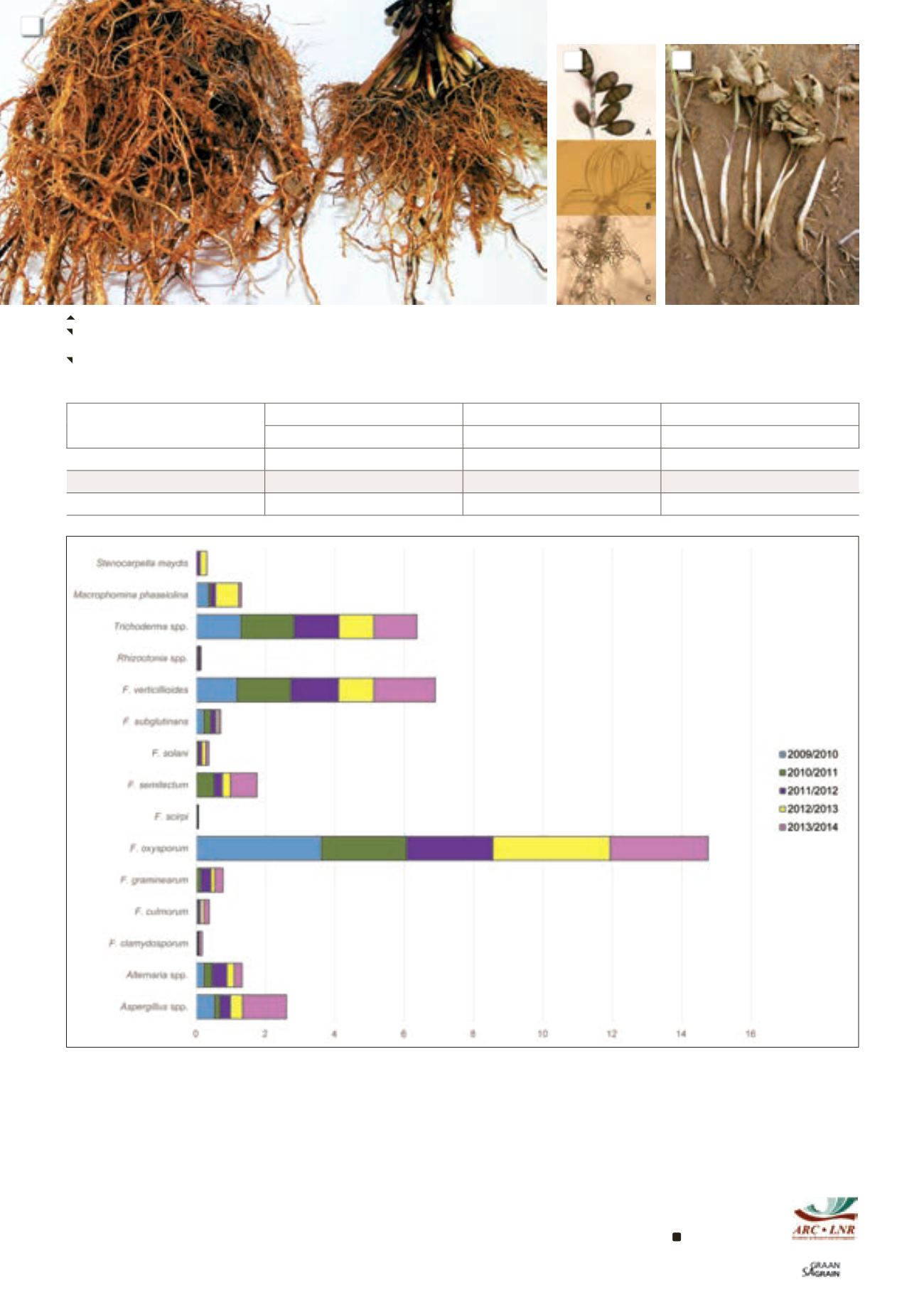

75
July 2016
fact that such a wide range of fungi were isolated could also point
to infection that occurred after the plant was exposed to a certain
stress. Since the symptoms resembled that of herbicide damage,
the recommendation was made that the producer investigate such
a possibility.
A new project co-funded by the Maize Trust commenced at the
ARC-GCI during April of this year and focuses on the further devel-
opment of the qPCR technology. The succession of the fungal
pathogen complex will be monitored – a first of its kind. This will
evaluate how qPCR technology can improve the understanding of
soilborne diseases and contribute to better management strategies
for producers.
For enquiries contact Dr Aneen Schoeman or
Dr Maryke Craven at 018 299 6100,
BelgroveA@arc.
agric.za
or
CravenM@arc.agric.za .EXEROHILIUM PEDICELLATUM FUSARIUM EQUISETI
RHIZOCTONIA SOLANI
CONCENTRATION (PG/μL)
CONCENTRATION (PG/μL)
CONCENTRATION (PG/μL)
Limit of detection
27
96
39
‘Diseased’ plant
0
5 037
0
‘Healthy’ plant
29,2
791
45,21
TABLE 1: QPCR RESULTS OBTAINED FOR ROOT ROT SAMPLES BROUGHT IN DURING DECEMBER 2015.
Graph 1: Average fungal frequencies of twelve known root and crown rot pathogens as measured at the Ventersdorp locality over five seasons (2009/2010
to 2013/2014).
1: Root systems of a ‘healthy’ as opposed to a ‘diseased’ plant.
2: The morphological characteristics of the fungal pathogens as observed under a light microscope, A)
Exserohilium pedicellatum
,
B)
Fusarium equiseti
and C)
Rhizoctonia solani
.
3: Soybean seedlings resembling symptoms associated with both Pythium root rot and herbicide damage.
1
2
3

















